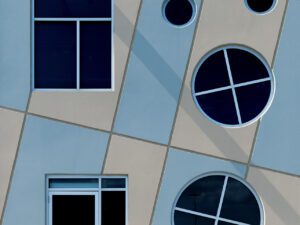In an 2018 essay for The New Yorker, author Zadie Smith describes Deana Lawson’s (b. 1979) photography as “prelapsarian” – as though existing in a time before the Fall, when, in Christianity, the first man and woman lost their innocence and were cast out from the Garden of Eden. “Her people seem to occupy a higher plane, a kingdom of restored glory, in which diaspora gods can be found wherever you look,” writes Smith. “Outside a Lawson portrait you might be working three jobs, just keeping your head above water, struggling. But inside her frame you are beautiful, imperious, unbroken, unfallen.”
Lawson has just received the 2022 Deutsche Börse Photography Foundation Prize for her mesmeric portraiture which presents scenes that seem familiar, intimate, and yet are meticulously staged. In New York, a major retrospective of her work is on show at MoMA PS1. Although not directly autobiographical, it draws on personal experience, producing a bold new vision of Blackness. “I don’t take my position as a Black female photographer lightly,” Lawson told fellow artist Carmen Winant. “I am working within a photographic history that is embedded with physical and psychic colonialism. But it is a privilege to be able to stand behind a camera and to construct my own desire and sense of eroticism in pictures.”

As with their literary counterparts, female-identifying visual artists have often delved into their own lives for inspiration. The reasons for this are manifold, but one is certainly that their stories have not traditionally been foregrounded in art history. In tandem with the Lawson exhibition is a group show at MoMA in Manhattan. Our Selves: Photographs by Women Artists presents 90 images from the past 100 years of the museum’s collection. The exhibition opens with a wall of self-portraits by modernist and contemporary photographers from Gertrud Arndt (1903-2000) to Tatiana Parcero (b. 1967).
Throughout, the curators have eschewed a conventional chronological narrative, instead placing works together from disparate periods or photographic styles. Works by Carrie Mae Weems (b. 1953), Ana Mendieta (1948-1985) and Graciela Iturbide (b. 1942), for example, interrogate a nexus of frequently intersecting questions about the body, race, civil rights, Indigenous sovereignty and queer liberation. In Our Selves, a “feminist photograph” takes on multiple definitions: repurposed or found vernacular pictures sit alongside new, elaborately staged compositions.
Deana Lawson runs until 5 September at MoMA PS1, New York | moma.org
Our Selves: Photographs by Women Artists from Helen Kornblum runs until 2 October at MoMA, New York | moma.org
Words: Rachel Segal Hamilton
Image Credits:
1. Sharon Lockhart, Untitled, 2010. Chromogenic print, 37 × 49 in. (94 × 124.5 cm). The Museum of Modern Art, New York. Gift of Helen Kornblum in honor of Roxana Marcoci. © 2021 Sharon Lockhart.
2. Deana Lawson. Roxie and Raquel New Orleans, Louisiana. 2010. Pigment print. 35 × 43 inches (88.9 × 109.2 cm). Collection of the artist. Courtesy the artist; Sikkema Jenkins & Co., New York; and David Kordansky, Los Angeles. © Deana Lawson





